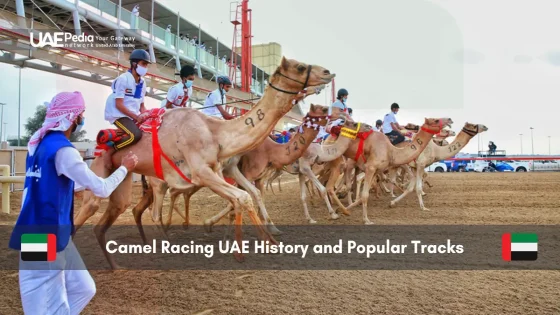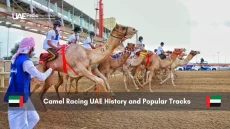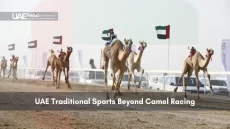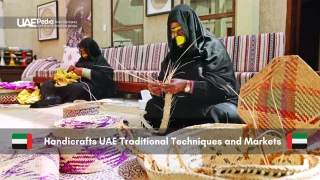Did you know over 1.8 billion people worldwide pause daily to fast during this sacred time? While the practice unites Muslims globally, the Emirates adds its own golden-hour glow to the experience – think glittering iftar tents under starlit dunes and communities bonding over shared meals.
This ninth month of the Islamic calendar begins only after confirmed sightings of the crescent moon – a tradition tracing back 14 centuries to the Quran’s revelation. For 29-30 days, observers abstain from food and water from dawn until sunset, focusing instead on spiritual growth and gratitude.
But here’s what makes the UAE special: its blend of deep-rooted customs and cosmopolitan energy. Whether you’re visiting or living here, understanding these rhythms helps you embrace the season’s warmth. We’ll walk you through everything from sunset etiquette to cultural gems hidden beyond the fasting hours.
- Discover how moon sightings set the calendar and why dates hold symbolic importance
- Learn how fasting fosters both personal reflection and community bonds
- Gain practical tips to respectfully participate in local traditions
Overview of Ramadan UAE Cultural Traditions
When the crescent moon appears, a collective energy sweeps through the Emirates, turning everyday moments into shared rituals. Streets hum with whispered greetings of “Ramadan Kareem” (Generous Ramadan), while children clutch colorful bags of sweets during Hagg Al-Layla—a pre-dawn tradition tracing back to the Prophet Muhammad (PBUH).
Communities thrive on connection here. Families gather at sunset for iftar, breaking fasts with dates and laban—a practice rooted in the lunar calendar’s rhythms. Public spaces transform too: hotels host lavish feasts, while neighborhoods buzz with shared meals under fairy lights.
| Traditional Practice | Modern Adaptation | Cultural Significance |
|---|---|---|
| Hagg Al-Layla celebrations | Community events in malls | Strengthens bonds across generations |
| Firing sunset cannons | Social media time alerts | Bridges heritage with today’s pace |
| Handmade sweets exchange | Gourmet gift box deliveries | Preserves culinary legacy |
Even non-Muslims join the spirit—dressing modestly and avoiding public eating during fasting hours. It’s this blend of reverence and innovation that defines the season. As one local chef told us: “We honor the past while setting tables for tomorrow.”
Historical and Religious Foundations of Ramadan
Centuries before smartphones pinged sunset alerts, desert communities perfected celestial timekeeping. The rhythm of this sacred month beats to the pulse of lunar cycles – a tradition preserved through generations. Let’s unravel how ancient practices shape modern observances.
The Significance of the Crescent Moon
That first silver sliver in the twilight sky isn’t just pretty – it’s scripture in motion. Prophet Muhammad (PBUH) taught followers to “begin fasting when you see it, and cease when you see it again”, tying faith directly to nature’s clock. Today, moon sighting committees across Muslim nations still scan horizons, blending telescopes with tradition.
The Islamic calendar’s lunar math means dates shift 10-11 days earlier each Gregorian year. This cosmic dance creates unique moments – like winter fasts with shorter days, or summer observances testing endurance. You’ll notice Emirati families gathering on rooftops during Hilal (crescent) sightings, maintaining a ritual older than the dunes themselves.
The Pillars of Islam and Fasting Practices
Fasting isn’t merely skipping lunch – it’s one of five foundational pillars of Islam, alongside faith declarations, prayer, charity, and pilgrimage. From dawn’s first light until sunset, abstaining from food and drink becomes a gateway to empathy and self-mastery.
But here’s what travelers often miss: the lunar calendar dictates more than meal times. It synchronizes global Muslims in shared reflection, whether they’re breaking fast with dates in Dubai or sharing iftar meals in Jakarta. Modern life adds new layers – apps track prayer times, while community initiatives amplify charity efforts – yet the core remains unchanged.
As one imam explained: “We don’t just watch the moon – we watch ourselves grow.” This interplay between celestial signs and spiritual discipline turns 29 days into a transformative journey.
Traditional Customs and Practices in the UAE
As dusk falls, a thunderous boom echoes across cities, signaling it’s time to break the fast—a tradition that turns every sunset into a shared moment. From candy-collecting kids to cannon blasts that ripple through neighborhoods, these rituals stitch together reverence and revelry.
Hagg Al-Layla’s Sweet Prelude
Weeks before fasting begins, streets come alive during Hagg Al-Layla. Children dressed in vibrant kanduras knock on doors, singing traditional songs in exchange for sweets. “It’s like Halloween meets caroling,” laughs a Dubai mother, “but with dates-stuffed treats instead of candy corn.”
When Cannons Speak Louder Than Clocks
That iconic boom? It’s not fireworks—it’s the midfa al iftar, a cannon fired since Sheikh Zayed’s era. Locals still gather at spots like Abu Dhabi’s Heritage Village to watch the flash and smoke that marks meal time. “The sound ties us to our roots,” explains a cultural guide. “Phones buzz alerts now, but nothing beats feeling that thud in your chest.”
Families often break their fast with dates and water first—a nod to Prophet Muhammad’s (PBUH) custom—before diving into lentil soups and saffron rice. Public squares host communal tables where strangers become friends over shared plates. Even non-Muslims join the spirit, swapping daytime coffee runs for sunset feasts.
Modern twists? Sure. Food trucks dish up luqaimat (sweet dumplings) beside artisanal coffee stalls. But the heart remains: a month where time slows, bellies fill, and communities rediscover what connects them.
Experiencing Community Celebrations and Iftar Gatherings
The aroma of cardamom-spiced coffee and sizzling lamb kebabs swirls through neighborhoods as sunset nears. This is when streets transform into open-air dining rooms – laughter bouncing between tables, strangers becoming friends over shared platters. Whether in cozy homes or grand tents, breaking fast becomes a symphony of clinking glasses and heartfelt conversations.
Family Traditions and Special Dishes
In local households, you’ll find generations gathered around tables laden with harees (wheat-and-meat porridge) and thareed (bread stew). “My grandmother’s recipe uses saffron from her childhood village,” shares Dubai resident Mariam Al-Mazroui. These meals aren’t just food – they’re edible heirlooms, served alongside stories that stretch back decades.
Social Events and Public Iftar Tents
Step into a public tent, and you’ll taste unity in every bite. Hotels and cultural centers host sprawling feasts where Emiratis, expats, and tourists share luqaimat dumplings and hibiscus drinks. Live oud music mixes with the clatter of plates, while volunteers distribute meals to drivers still on the road.
Post-meal hours buzz with activity. Children chase light projections on mosque walls as adults sip karak chai. Cultural troupes perform ayyala dances under strings of fairy lights, their movements syncing with distant calls to evening prayer. As one visitor noted: “It’s like the whole city becomes one big family dinner – but with better decor.”
Practical Considerations for Visitors During Ramadan
Ever wonder how to blend in while the city shifts its rhythm? Navigating this special season becomes effortless when you know the local codes. From adjusted business hours to cultural courtesies, a few mindful choices let you experience traditions without missing a beat.
Ramadan Etiquette for Non-Muslims
Daylight hours call for discreet dining. While fasting isn’t required for non-Muslims, avoiding public eating or drinking shows respect. Keep snacks private—many malls offer designated curtained areas for quick bites. Dress modestly too; think knee-length shorts and covered shoulders.
Local authorities remind visitors to skip gum-chewing and loud music during fasting times. As one tourism official notes: “It’s about shared space, not restrictions.” Save playlists for hotel rooms, and you’ll sync with the community’s reflective vibe.
Restaurant Hours and Public Behavior
Sunset transforms the dining scene. Most eateries close by day but burst alive for iftar feasts. Book tables early—top spots fill fast. Pro tip: Taxis get busy near meal times, so schedule rides 30 minutes before breaking fast.
- Check venue websites for sunset-to-midnight operating hours
- Sample special menus featuring traditional dishes like lentil soups and date desserts
- Confirm attraction schedules—some adjust opening times post-sundown
Businesses typically shorten working hours by 2-3 hours daily. Government offices often run 9 AM–2:30 PM. Grocery stores? They’re your dawn allies—stock up early for daytime essentials. With these tweaks, you’ll glide through the month like a local.
Health and Wellness Tips for Fasting and Energy
Ever wondered how locals stay energized from sunrise to sunset? The secret lies in balancing nourishment and mindfulness. While fasting reshapes daily rhythms, strategic choices can turn this sacred practice into a wellness reset button – no caffeine crashes required.
Fueling Your Day Right
Start with suhoor meals that release energy slowly. Cleveland Clinic Abu Dhabi dietitian Amal Hassan suggests: “Combine complex carbs like oats with protein-rich eggs or labneh. It’s like building a sandcastle – layer wisely so it lasts through the tide.” Skip salty snacks and sugary juices to avoid midday thirst traps.
When breaking your fast, think hydration first. WHO recommends sipping 2-3 cups of water before diving into meals. Dates provide quick glucose spikes, while soups like lentil shorba replenish electrolytes. One Emirati grandmother’s tip? “Eat the rainbow – colorful veggies keep your engine humming.”
| Suhoor Superstars | Iftar Allies | Midnight Snack No-Nos |
|---|---|---|
| Whole-grain bread | Grilled fish/chicken | Soda & fried foods |
| Unsweetened yogurt | Steamed vegetables | Heavy desserts |
| Almond butter | Fresh fruit salads | Spicy dishes |
Light movement matters too. A 15-minute evening walk aids digestion better than crashing on the couch. Sync workouts with non-fasting hours – many gyms offer extended night schedules. And don’t skimp on sleep: power naps beat third cups of karak chai for sustained energy.
As the moon cycles through its phases, listen to your body’s signals. Adjust meal sizes if you feel sluggish, or swap screen time for stretching. Health authorities emphasize that fasting isn’t about deprivation – it’s a chance to rediscover your natural rhythms. Now pass the water bottle!
Charitable Acts and Community Outreach Initiatives
“The true wealth of this season isn’t in our wallets – it’s in our willingness to share,” says a spokesperson from Abu Dhabi’s Department of Community Affairs. As twilight paints the sky, an invisible thread of generosity weaves through neighborhoods. From grocery store donation bins to pop-up soup kitchens, compassion becomes the currency of the hour.
Zakat Campaigns and Food Donations
Religious affairs organizations kick into high gear during this sacred period. The Zakat Fund distributes over 12 million meals annually through smart donation boxes and app-based contributions. Local bakeries partner with charities, transforming unsold bread into care packages for laborers. Even grocery chains join – scan a QR code at checkout to add rice or cooking oil to community baskets.
| Traditional Giving | Modern Methods | Impact |
|---|---|---|
| Door-to-door collections | Blockchain zakat tracking | Transparent fund allocation |
| Mosque food drives | AI-powered need prediction | Targets urgent requirements |
Embracing the Spirit of Generosity
Sunset transforms parking lots into banquet halls as volunteers serve iftar to thousands. “These meals aren’t about charity – they’re about dignity,” notes a Red Crescent coordinator. In Saudi Arabia and Abu Dhabi, cultural affairs departments organize “Blessed Tables” where CEOs and construction workers break bread side by side.
Schools host donation marathons, kids trading toys for canned goods. Corporations compete in kindness – one telecom company donates a meal for every gigabyte used. As the moon cycles through its phases, these acts create ripples far beyond the holy month, proving that shared humanity tastes sweeter than any date.
Understanding Changes in UAE Work and Public Life
Notice how cities slow their pulse to match the season’s rhythm? Office towers dim lights earlier, while supermarkets buzz with nocturnal shoppers. Official announcements confirm it: working hours shrink by two hours nationwide, creating space for reflection and family time.
Reduced Working Hours and Modified Schedules
From government departments to tech startups, clocks tick differently now. A Ministry of Human Resources spokesperson shares: “This isn’t just policy—it’s cultural respect.” Even non-Muslim colleagues benefit, gaining extra time for sunset yoga or early dinners.
Impact on Transportation and Shopping Hours
Malls flip their scripts, staying lively past midnight. Metro trains sync with prayer breaks, while taxi apps ping reminders: “Book rides 30 minutes before iftar—drivers need their meal too.” Grocery deliveries surge at dawn as smart fridges restock dates and laban.
These shifts do more than adjust schedules—they rewrite social codes. Extended night markets become community hubs where office suits and abayas browse artisanal honey under string lights. As one Dubai resident puts it: “We trade rush hour for golden hour.”
Cultural Highlights of Ramadan in Abu Dhabi and Dubai
When twilight paints the sky, cities transform into glowing labyrinths of possibility. In Abu Dhabi, geometric lanterns dangle above pedestrian boulevards, while Dubai’s creek-side souks hum with henna artists and oud players tuning their instruments. This is when the Emirates’ cultural heartbeat quickens—a fusion of heritage and innovation that turns every evening into a choose-your-own-adventure story.
Festive Evening Activities and Local Attractions
Abu Dhabi’s Heritage Village becomes a stage after sunset. Artisans demonstrate falconry under spotlights as food stalls dish mahshi (stuffed vegetables) to crowds gathering for poetry slams. Across town, the Grand Mosque hosts night tours where visitors whisper reflections beneath domes shimmering like crushed diamonds.
Dubai answers with its own magic. The Dubai Fountain dances to traditional music during prayer breaks, water jets syncing with Quranic recitals. “It’s like watching faith become liquid,” marvels a tourist from Texas. For something edgier, Alserkal Avenue’s warehouses host midnight calligraphy workshops paired with live Arabic jazz.
Local tip: Follow the scent of frankincense to Qasr Al Hosn in Abu Dhabi. This fort-turned-cultural-hub offers hands-on date-pitting demos and Bedouin storytelling sessions. In Dubai, book a dhow cruise that serves iftar as skylines twinkle—a feast for eyes and palate.
As the holy month unfolds, these cities prove culture isn’t just preserved—it’s performed. From drum circles under palm trees to augmented reality exhibits tracing Islamic art, every night offers new ways to connect. Just don’t forget comfy shoes—you’ll want to wander until dawn’s first call to prayer.
Embracing Spiritual Reflection and Traditional Cuisine
As stars begin to twinkle above minarets, a hush falls over neighborhoods – the quiet before a symphony of clinking plates and whispered blessings. This sacred season weaves together two threads: inner stillness found in nightly devotions and the vibrant tapestry of shared feasts.
Moonlit Prayers and Silent Growth
Long after sunset, mosques glow with rows of worshippers performing Tarawih – special night prayers. “It’s like pressing pause on the world,” says Dubai teacher Fatima Al-Mansoori. “Between verses, you hear your own heartbeat.” These gatherings aren’t just rituals; they’re communal exhales after days of fasting.
Plates That Tell Stories
When the cannon booms, tables transform into edible history books. Families break their fast with dates dipped in laban – a nod to ancient desert wisdom. Grandmothers serve thareed (bread stew) using recipes whispered through generations. “My great-grandmother cooked this over campfires,” shares Abu Dhabi chef Khalid Al-Mazroui. “Every bite carries her legacy.”
Sweet endings? Think luqaimat drizzled with date syrup or rosewater-infused umm ali. These treats do more than satisfy cravings – they spark conversations. As strangers exchange “Ramadan Kareem” over shared platters, barriers melt like sugar in hot tea.
“Our meals are love letters to the past,” explains cultural historian Dr. Aisha Al-Hammadi. “When we share them, we’re not just feeding bodies – we’re nourishing bonds.”
From dawn supplications to midnight reflections, this month offers a rhythm unlike any other. Whether you’re savoring saffron rice or listening to Quranic recitals echo through marble halls, every moment invites you to taste tradition and touch the divine.
Final Thoughts on Experiencing Ramadan in the UAE
As twilight paints the skyline in amber and indigo, the Emirates reveals its magic—a harmony of ancient rhythms and modern energy. Whether you’re marveling at moon sighting rituals or sharing laughter over luqaimat, this season invites you to witness faith woven into daily life.
Remember: the lunar calendar isn’t just a timetable—it’s a bridge connecting generations. From the pillars of Islam guiding fasts to cannon blasts marking meal times, traditions here pulse with purpose. Plan ahead—restaurants flip schedules like dessert menus, serving feasts under stars instead of noon sun.
Want the full experience? Join public iftar tents where flavors from 100 countries collide. Swap stories with Emirati grandmothers kneading dough, or trace constellations as night prayers echo. Then carry home more than souvenirs—maybe a habit of sunset gratitude or recipes for lentil stew.
This year, let the UAE’s blend of reverence and innovation reshape your perspective. Pack curiosity, respect, and stretchy pants—you’ll need all three. As the final crescent fades, you’ll leave not just fed, but transformed.
Authorities use moon-sighting committees to spot the crescent after sunset on the 29th day of Sha’ban. If seen, the next day marks the first day of fasting. Cloudy skies? The Islamic calendar defaults to 30 days for the previous month.
Eating, drinking, or smoking in public spaces is discouraged out of respect. Many malls and offices provide screened/private areas for non-fasting individuals. Dress modestly, and keep music volume low in cars or homes.
Yes! Most workplaces adopt a six-hour schedule (typically 9 AM–3 PM), while retail hubs extend evening hours. Government offices often close by 2:30 PM. Always check venue websites for seasonal adjustments.
These nutrient-rich foods stabilize blood sugar after sunset, following Prophet Muhammad’s tradition. Emirati households serve dates from Al Ain or Liwa alongside savory samosas and hydrating jallab drinks.
Absolutely—many mosques and organizations like the Red Crescent host free gatherings. Hotels also offer lavish spreads (book ahead!). Remember to arrive 15 minutes before the cannon fire signals maghrib prayers.
Swap midday workouts for light exercises 1–2 hours after iftar. Parks like Dubai’s Mushrif host night volleyball tournaments. Hydrate well during suhoor with water-rich fruits like watermelon.
Giving 2.5% of one’s savings is a pillar of Islam, but Ramadan amplifies charity. Look for “Ramadan Sharing Fridges” in neighborhoods or donate through apps like Dubai Cares. Many companies match employee contributions.
Yes—Careem and Uber often add surge-free promotions around Taraweeh times (9–11 PM). Metro systems in Dubai and Abu Dhabi extend hours, with women-only carriages available for added comfort.
Try balaleet—sweet vermicelli topped with omelet—or harees, a slow-cooked wheat and meat porridge. Both provide sustained energy. Street vendors in Deira’s Naif Market sell these until dawn.
A> Avoid snapping people praying or private family gatherings without consent. Public celebrations like the Sheikh Zayed Grand Mosque illuminations encourage photos—tag #UAERamadan for possible features by tourism boards!

















